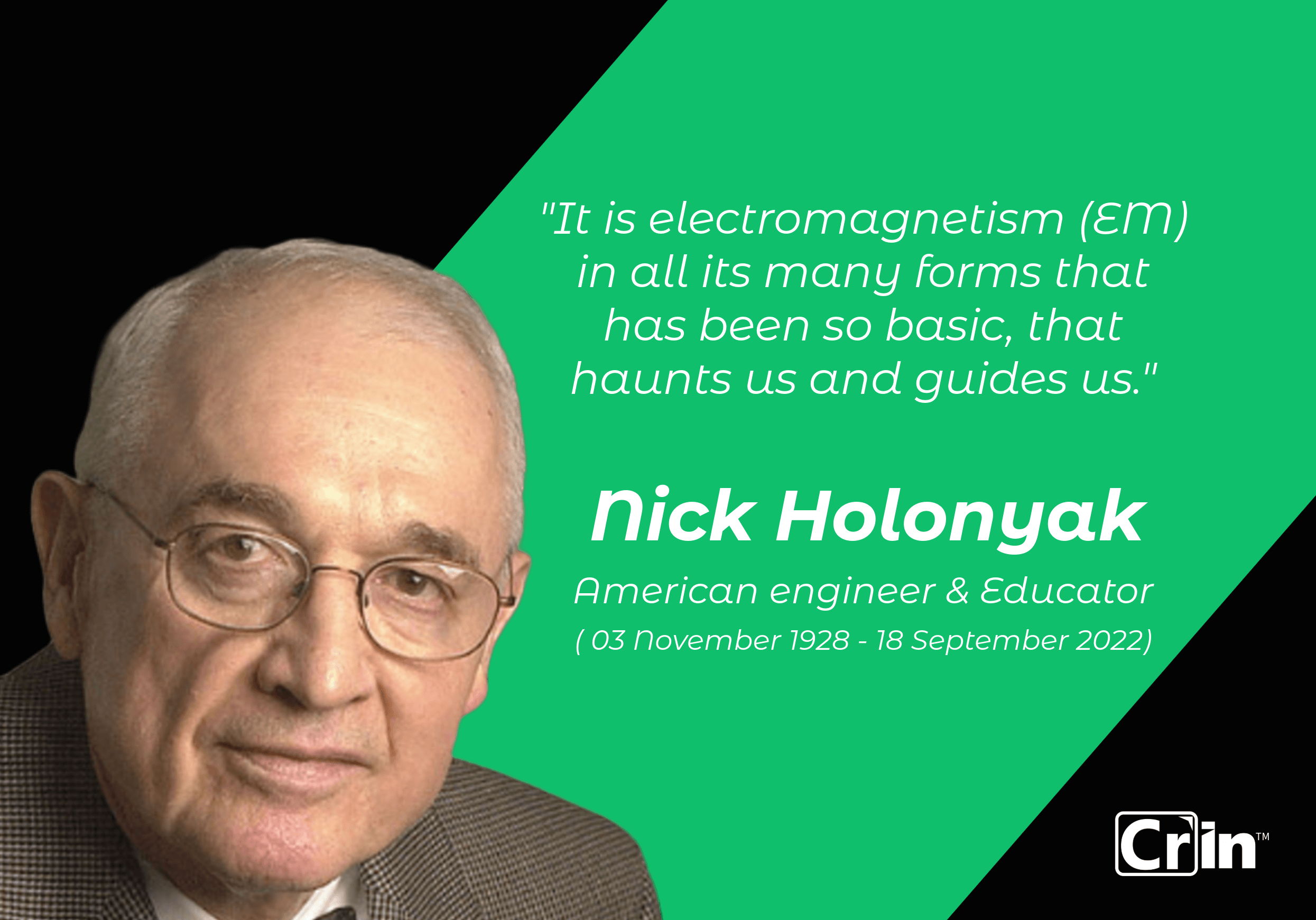Brief Description :-
Nick Holonyak Jr., an American engineer and educator, was a pioneer in the field of optoelectronics. His most significant contribution was the invention of the first visible light-emitting diode (LED) in 1962. This invention revolutionized the lighting industry and paved the way for countless applications we use today.
Born in 1928, Holonyak’s passion for science led him to the University of Illinois at Urbana-Champaign, where he earned his bachelor’s, master’s, and doctoral degrees in electrical engineering. Notably, he was the first doctoral student of John Bardeen, the co-inventor of the transistor.
Holonyak’s career flourished at the General Electric research laboratory near Syracuse, New York. In 1962, after tireless experimentation, he achieved a breakthrough by creating the first semiconductor laser diode that emitted visible red light. This invention, initially dismissed by some, became the foundation for the first generation of commercial LEDs.
LEDs, once known for their dim red glow, have come a long way since Holonyak’s initial creation. Today, LEDs emit a wide range of colors, are incredibly energy-efficient, and have a long lifespan. They are used in everything from traffic lights and smartphone displays to televisions and building illumination.
Holonyak’s impact extends far beyond LEDs. He also made significant contributions to the development of semiconductor controlled rectifiers and diode lasers. Throughout his career, he received numerous prestigious awards, including the National Medal of Science and the IEEE Medal of Honor.
Nick Holonyak’s legacy is one of innovation and perseverance. His invention of the visible LED not only illuminated the world but also opened doors to a future of sustainable and efficient lighting solutions.
For detailed information, kindly visit Nick Holonyak on Wikipedia
